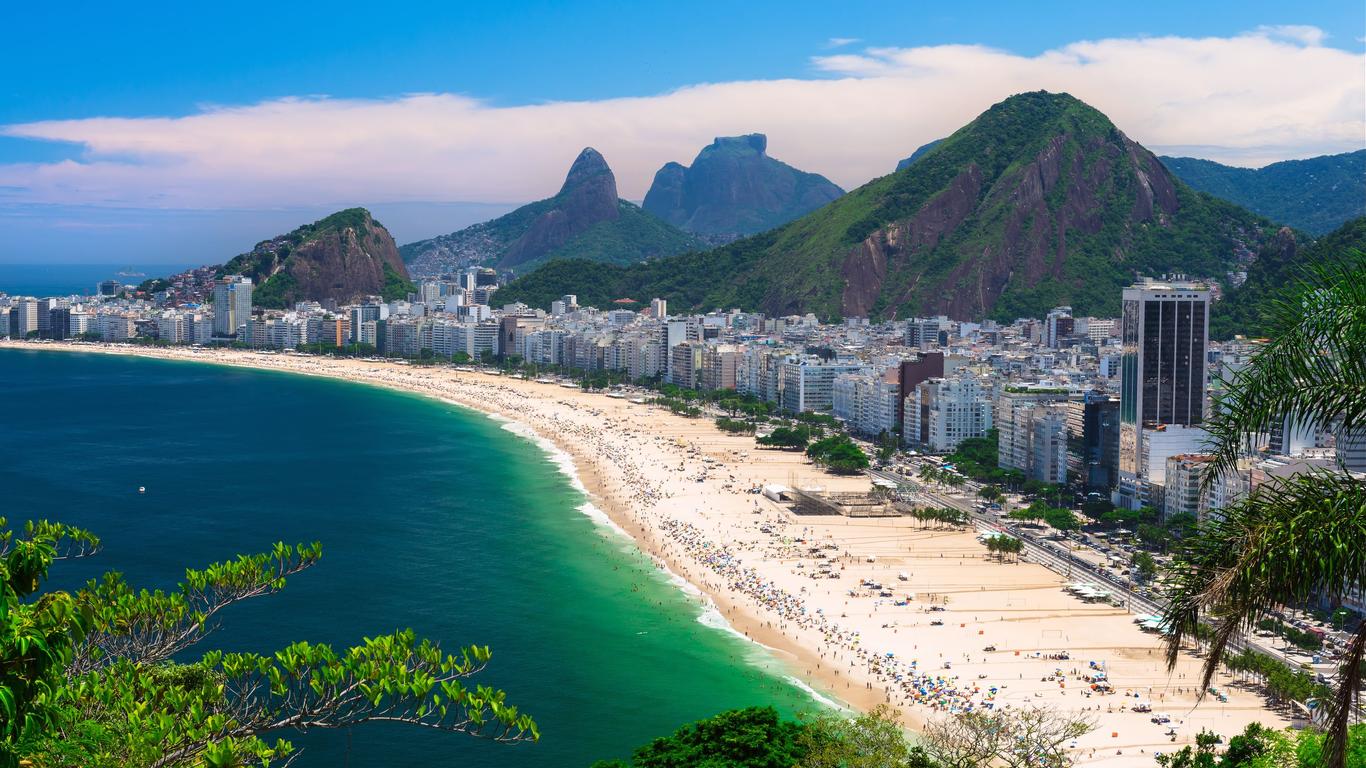Stretching for four kilometres along Rio’s sun-kissed coast, Copacabana Beach is an institution, to say the least. Expect to see bronzed bodies, teeny tiny bikinis and a sea of colourful umbrellas in addition to a string of caipirinhas kiosks, Brazilian flags and toned locals competing in beach soccer matches.
Unofficially, the famous beach is divided into a string of sections. The LGBTQ community flocks to the strip between Copacabana Palace hotel and Rua Fernando Mendes, with rainbow flags flying loud and proud. Sports buffs hang out near the Rua Santa Clara stretch, with Postos 5 and 6 attracting families, kids and retirees. Neighbouring Forte de Copacabana is the fisherman’s colony, with the beach getting quieter around the Leme neighbourhood.
Given its four-kilometre long footprint, Copacabana Beach has plenty of access points. Public transport is a breeze, with the subway running directly to the beach, as well as a handful of city buses. At a steady pace, it’s also possible to walk the beach from end to end in under one hour, with plenty of opportunities to people watch along the way.
Beyond bikinis and beach bodies, Copacabana Beach is also steeped in history. Built in 179, the imposing Fort Duque de Caxias is a beautifully restored hilltop stronghold. Nearby is the one and only Copacabana Fort, dating back to 1914. Today, the functioning military base is open to the public and houses the Army Historical Museum.





